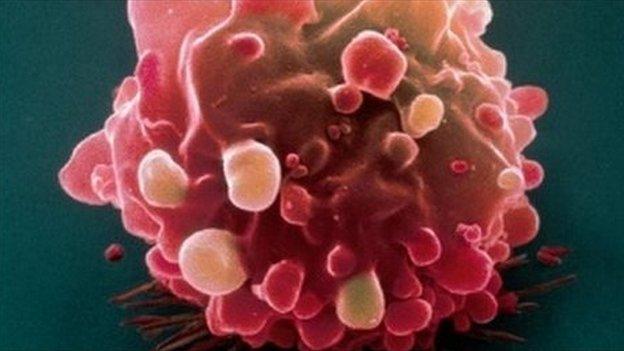Stephen's story: What's the secret to teen's fundraising success?
- Published
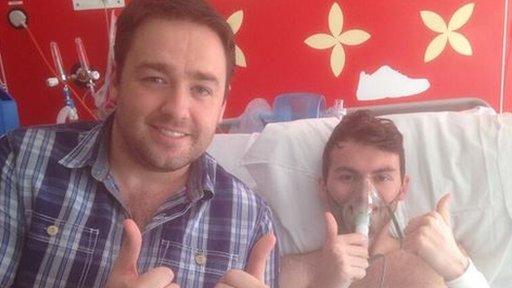
Jason Manford said he was inspired after hearing Stephen's story
A teenager from Staffordshire suffering with cancer has raised more than £3m for charity in a campaign fuelled largely by social media.
Stephen Sutton's story - which people have been able to follow via Twitter and Facebook - has earned him national praise and celebrity friends. But how unusual are his achievements and what is the secret to his success?
It may be his resolve in the face of adversity. Or his acute social networking skills, external. Or possibly the backing of well-known household names such as Jason Manford.
Whatever is behind the 19-year-old's fundraising success, it's fair to say he's surpassed his own expectations.
Starting with an original target of £10,000, Stephen Sutton has become the Teenage Cancer Trust's highest individual supporter of all time, attracting more than 123,000 donations from 94 different countries.
'Emotional connection'
A Twitter spokeswoman said since 21 April, when Stephen's story began, there have been 225,000 Tweets featuring his name or the #thumbsupforstephen or #StephensStory hashtags.
Tamara Ansons, a social media expert at the University of Warwick, believes the specific nature of Stephen's situation has helped him raise so much, so quickly.
"There are a lot of emotions involved," she said.
"He is quite young. He is a great individual. People really latch on to that and have a real emotional connection.
"While his situation is sad he is also inspirational. People hear about his story and they are inspired."
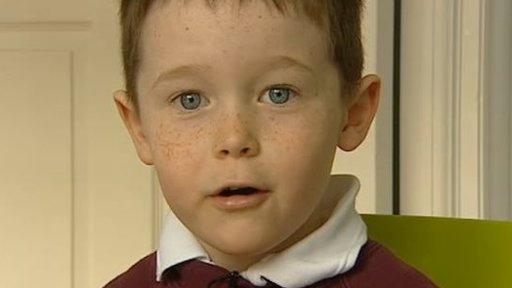
Jack Henderson raised £32,000 for the Royal Hospital for Sick Kids in Edinburgh by drawing pictures people had requested
It is not the first time the power of social media has been demonstrated when it comes to fundraising.
When Rachel Beckwith, external died in a crash just days before reaching her ninth birthday - fundraising for MyCharityWater went into overdrive.
The youngster, from Washington, in the US, had set herself a target of achieving $300 for the charity, which works to supply people in poor countries with clean water. But she was killed when she was just $80 short.
However, news of her fundraising spread quickly thanks to social media and the total soon increased to more than $1.2m.
Similarly, Jack Henderson earned £32,000 for sick children in Edinburgh, external - partly thanks to people spreading the word on social networking sites Facebook and Twitter.
At the age of six, the youngster started drawing pictures for people in return for donations to the Royal Hospital for Sick Children in Edinburgh, where his younger brother had received care. He received 600 commissions and 1,800 emails in two weeks.
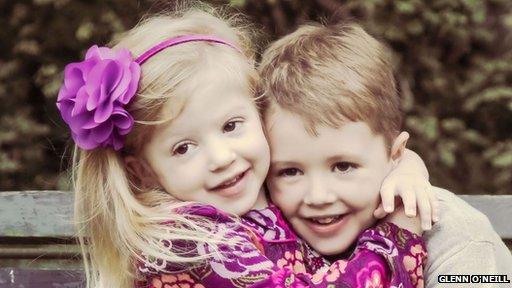
Eliza O'Neill, pictured hugging her brother Beckham, was diagnosed with Sanfillippo syndrome type A
And in South Carolina, the family of a four-year-old American girl battling a deadly disease have raised more than $600,000 thanks to social media.
Eliza O'Neill was diagnosed with Sanfilippo syndrome type A, which can kill sufferers before the end of their teens., external
But her family produced a viral video, external explaining her plight and, since then, people from across the world have been donating money to pay for research that could save her.
Her father Glenn said: "Should everything work and there be a positive outcome of the clinical trial, never will social media from around the world have played a more direct role in stopping a deadly childhood disease."
'Unprecedented case'
Stuart Fowkes, a social media manager at Oxfam, said social media had become "critical" for charities in recent years.
"We are increasingly seeing that people want to be able to make donations through platforms they are already on," he said.
"They don't want to have to sign up to something. They want to do something through Twitter or Facebook."
The #nomakeupselfie trend raised £8m in six days for Cancer Research.
The charity did not start the trend and, in its early stages, it was difficult to see how posting pictures of people not wearing make-up could equate to support.
But one Cancer Research worker posted a picture of herself, external with the donation number and others followed suit.
Similarly, the success of the Movember campaign - whereby men grow moustaches during November to raise funds for charity - is also rooted in social media, with participants posting pictures of themselves and asking for donations.
Mr Fowkes said while many of Oxfam's supporters used sites like Facebook and Twitter to boost fundraising, he said Stephen's case was "unprecedented" because of its enormity.
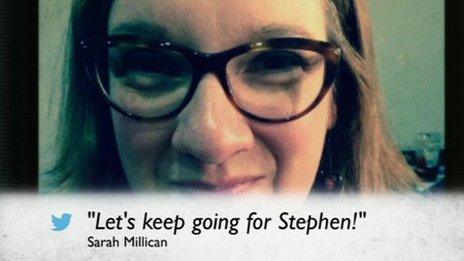
Comedian Sarah Millican is among those who have supported Stephen on Twitter
He said part of the success was down to the fact it was a personal story led by Stephen himself.
"The way it's being plugged through Twitter and Facebook is the social media equivalent of a marathon runner telling a story by wearing a picture of a relative on their t-shirt," he said.
"It's about putting the person front and centre rather than the organisation."
'Horrendous experience'
Lucy Hooberman, a professor of digital media and innovation at the University of Warwick, said there was a 10 year history of organisations, and individuals using social media including blogs to raise money for campaigns and said the platforms were very powerful.
But she said: "The kicker for this [Stephen's] campaign is of course the young man himself, his ideas, his spirit and his strength to transform a horrendous experience into a historically important act of generosity towards the future.
"We are all terrified of cancer for ourselves and for our family.
"It's only the very special people who can manage to make something out of it."
- Published23 April 2014
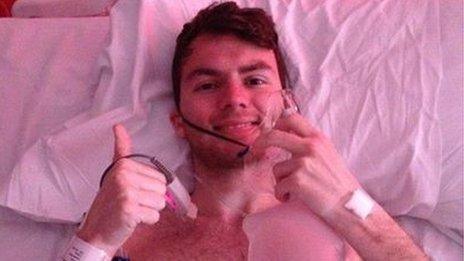
- Published23 April 2014

- Published21 April 2014

- Published20 April 2014
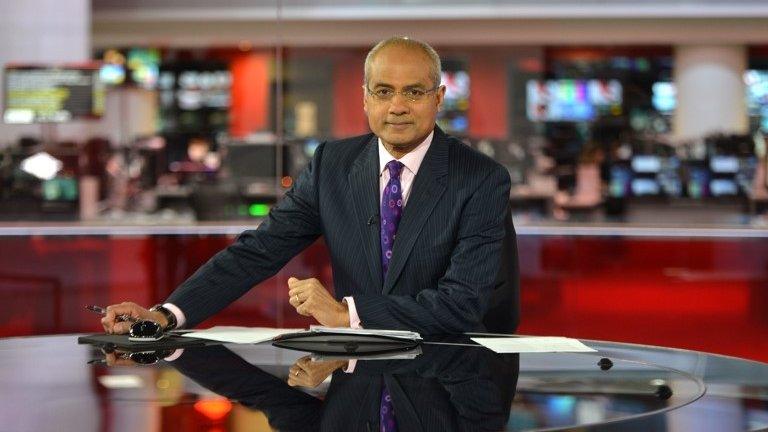
- Published16 April 2014
